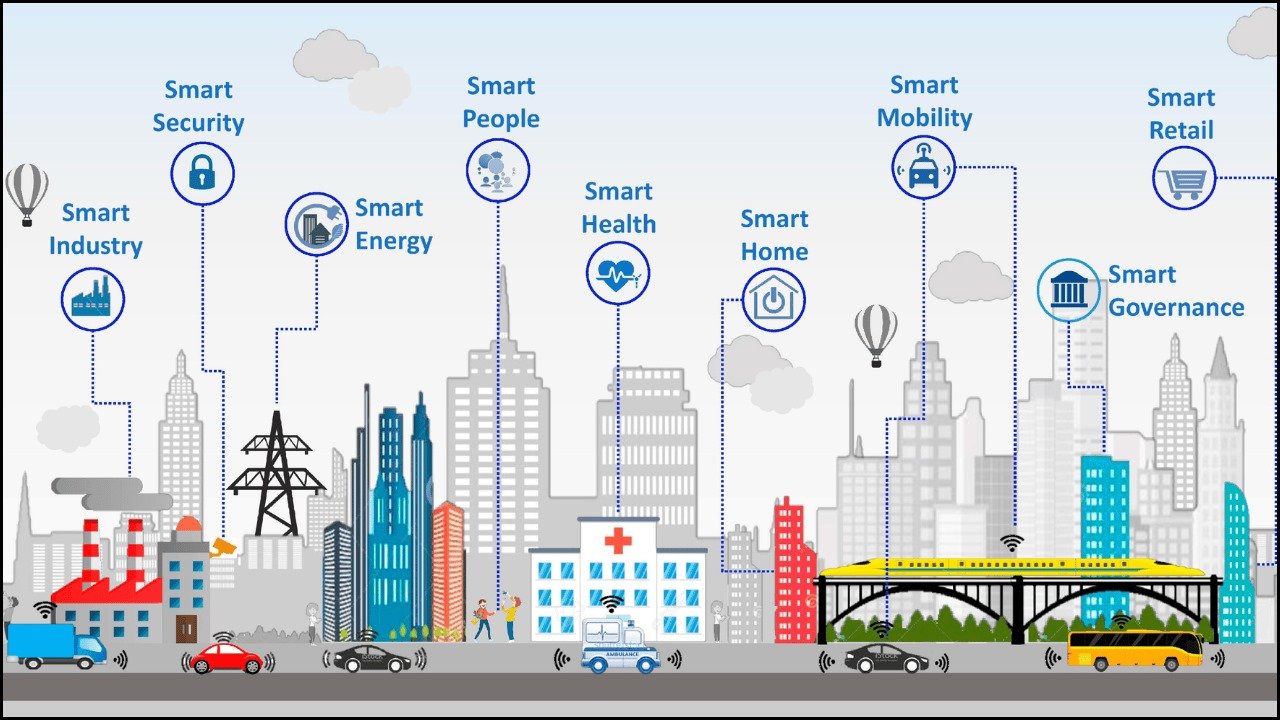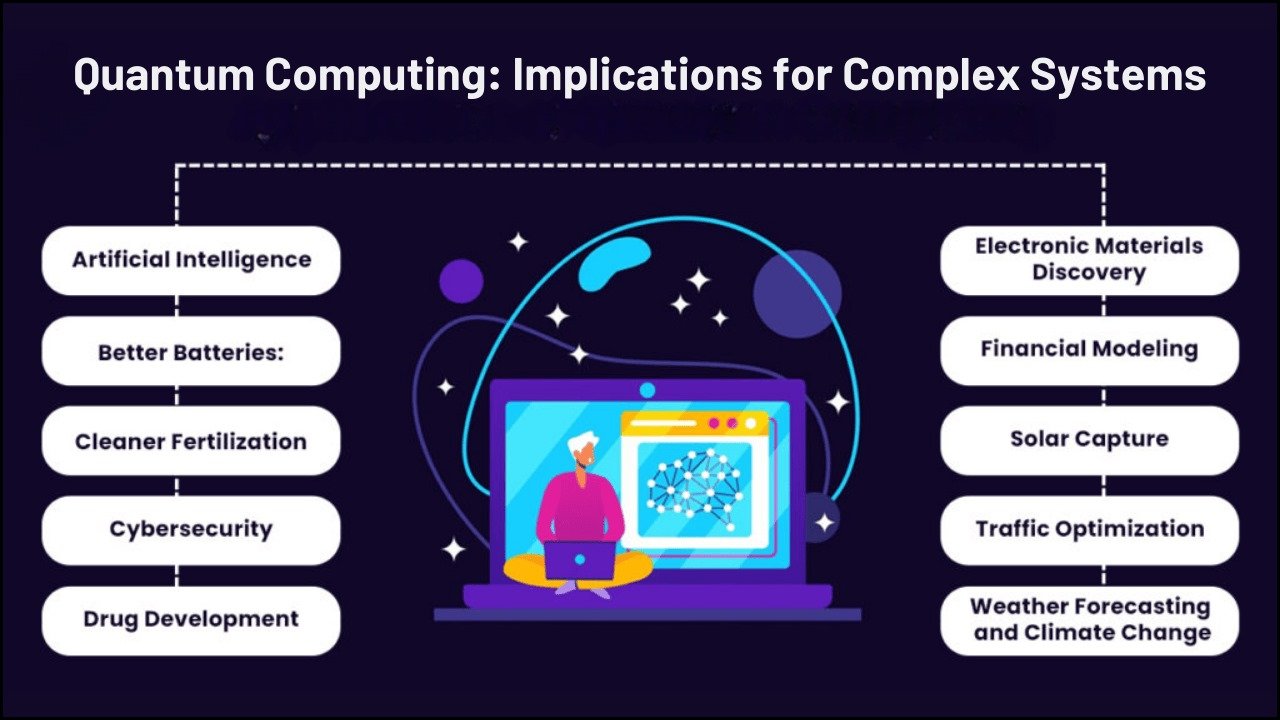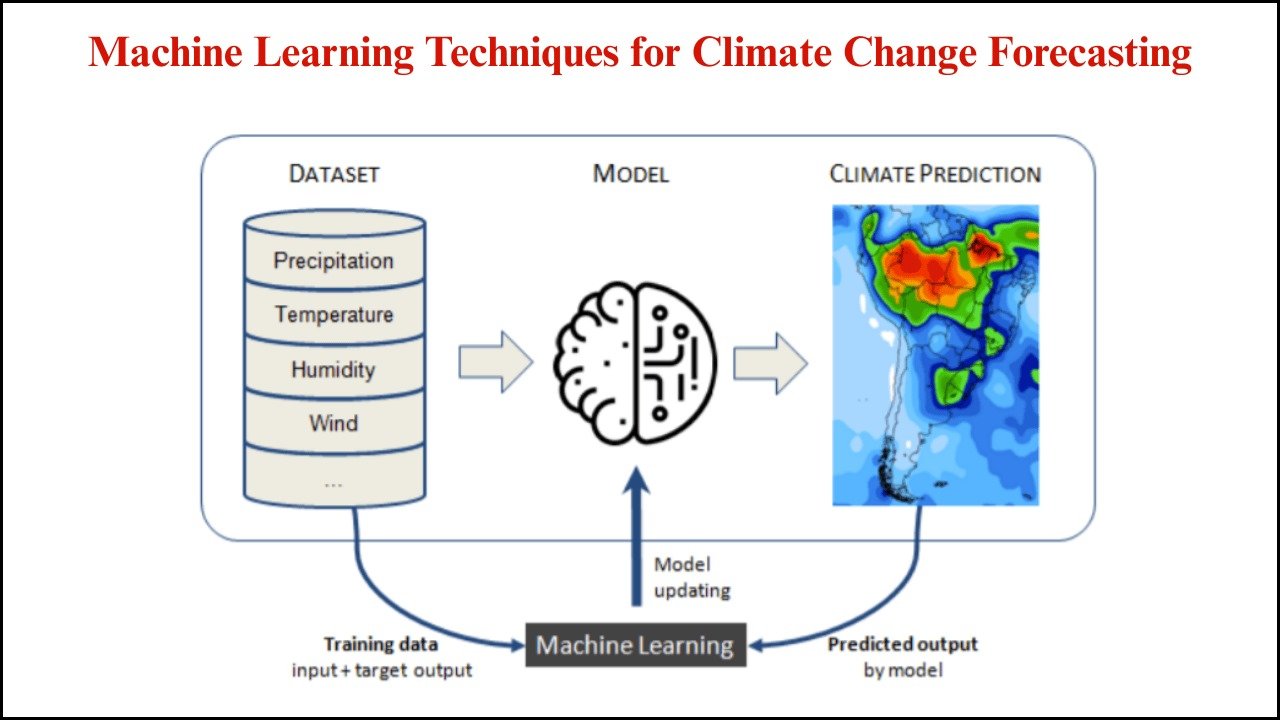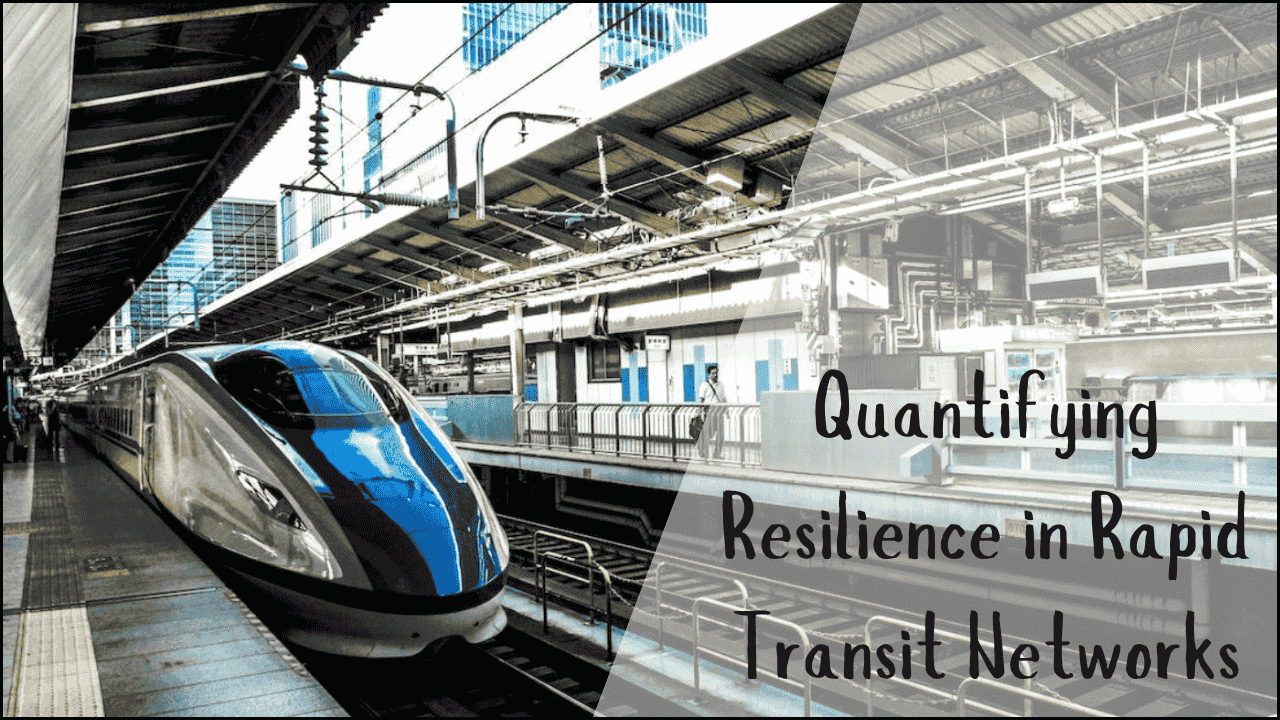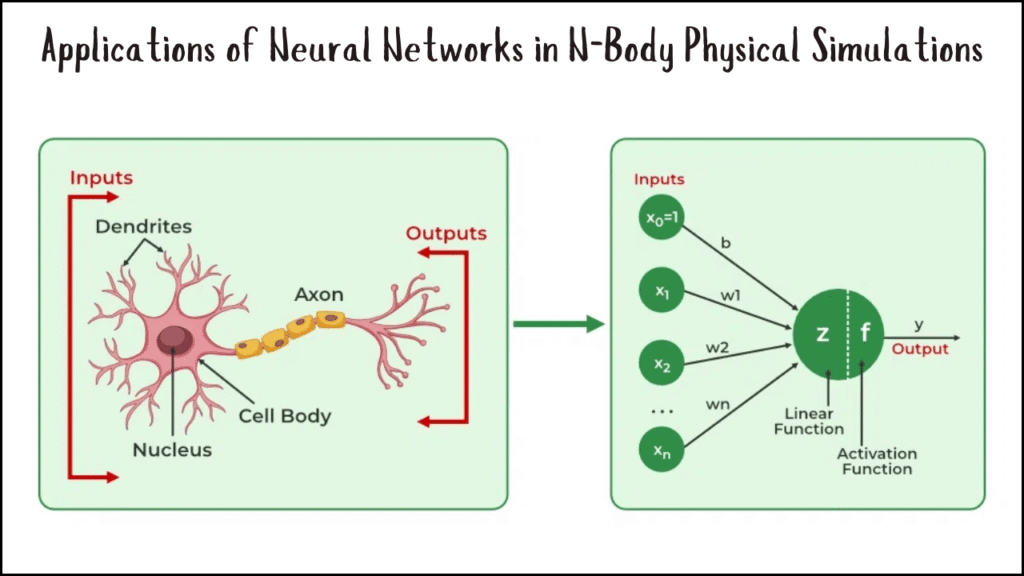
N-body physical simulations are fundamental tools in computational physics, astrophysics, and molecular dynamics. These simulations model the interactions between multiple particles under physical forces such as gravity, electrostatics, or molecular potentials. The increasing complexity of large N-body systems has made traditional simulation techniques computationally expensive and time-consuming. Neural networks have emerged as powerful tools to approximate and accelerate these simulations, providing accurate predictions while reducing computational cost. The integration of machine learning techniques with classical N-body simulations is transforming research in physics, astronomy, and materials science.
Table of Contents
Fundamentals of N-Body Simulations
- Definition: N-body simulations involve computing the dynamics of N interacting particles according to physical laws.
- Applications: Used in astrophysics to model galaxies, star clusters, and planetary systems; in molecular physics to study protein folding and chemical reactions.
- Challenges: Traditional simulations scale as O(N²) or higher, leading to large computational costs for systems with many particles.
- Force Calculations: Forces between particles, such as gravitational or electrostatic interactions, require accurate and repeated computation at each timestep.
- Time Integration: Numerical integration techniques, including Verlet, Runge-Kutta, or symplectic methods, are used to update particle positions and velocities.
Introduction of Neural Networks
- Definition: Neural networks are machine learning models inspired by biological neurons, capable of learning complex patterns and functions from data.
- Motivation: Neural networks can approximate the force fields or potential energy surfaces in N-body simulations without explicitly computing pairwise interactions.
- Advantages:
- Reduced computational time for large N-body systems
- Ability to generalize to new particle configurations
- Potential to incorporate experimental or observational data into simulations
- Types of Neural Networks Used:
- Feedforward neural networks (FNN)
- Convolutional neural networks (CNN) for structured data
- Graph neural networks (GNN) for representing particle interactions as graphs
Applications in Astrophysical Simulations
- Galaxy Formation: Neural networks can model gravitational interactions among billions of stars, reducing the computation required for simulating galaxy evolution.
- Dark Matter Distribution: Machine learning models can predict large-scale dark matter distributions from initial conditions, approximating results from traditional N-body simulations.
- Star Cluster Dynamics: Neural networks help forecast cluster evolution under complex gravitational interactions, including close encounters and tidal effects.
| Application | Neural Network Role | Impact |
|---|---|---|
| Galaxy Formation | Approximation of gravitational forces | Reduced simulation time from months to days |
| Dark Matter Mapping | Predict large-scale structures | Improved accuracy and speed in cosmological studies |
| Star Cluster Dynamics | Forecast multi-body interactions | Enhanced predictions for star trajectories and cluster stability |
Applications in Molecular and Materials Science
- Protein Folding: Neural networks predict interatomic potentials and energy landscapes, facilitating faster protein folding simulations.
- Molecular Dynamics: Machine learning models approximate force fields for complex molecules, reducing the number of explicit force calculations.
- Materials Design: Neural networks assist in simulating the behavior of nanoparticles, polymers, and crystalline structures under various conditions.
| Application | Neural Network Role | Impact |
|---|---|---|
| Protein Folding | Learning potential energy surfaces | Faster convergence and accurate folding predictions |
| Molecular Dynamics | Force field approximation | Reduced computational cost for large molecules |
| Materials Design | Predicting molecular interactions | Accelerated design of novel materials |
Graph Neural Networks for N-Body Systems
- Concept: Represent particles as nodes and interactions as edges in a graph structure.
- Advantages:
- Natural representation of N-body interactions
- Scalable to large particle systems
- Ability to generalize across different system sizes and configurations
- Applications:
- Astrophysics: Modeling star clusters and planetary systems
- Molecular dynamics: Predicting interatomic forces in large molecules
- Fluid dynamics: Simulating particle-based fluids and plasmas
Hybrid Approaches
- Combination with Classical Methods: Neural networks can be integrated with traditional N-body algorithms, where the network predicts forces or accelerations for subsets of particles.
- Benefits:
- Maintain physical accuracy while improving computational efficiency
- Enable real-time simulations for interactive applications
- Reduce memory and storage requirements for large simulations
- Examples:
- Fast multipole methods enhanced with neural network approximations
- Coarse-graining of molecular systems using machine learning force fields
Challenges and Limitations
- Training Data Requirements: Neural networks require large, high-quality datasets from simulations or experiments.
- Generalization: Models trained on specific system sizes or configurations may fail to generalize without careful design.
- Physical Constraints: Ensuring conservation of energy, momentum, and symmetries in neural network predictions is critical.
- Interpretability: Neural network models can act as black boxes, making it difficult to understand the physical reasoning behind predictions.
Future Directions
- Physics-Informed Neural Networks (PINNs): Integrate physical laws directly into the network architecture to improve accuracy and generalization.
- Real-Time Simulations: Neural networks may enable interactive simulations in astrophysics, molecular dynamics, and engineering.
- Integration with High-Performance Computing: Combining neural networks with GPUs and distributed computing for large-scale N-body systems.
- Adaptive Learning: Networks that update during simulations to refine force predictions dynamically.
| Future Trend | Potential Impact |
|---|---|
| Physics-Informed Neural Networks | Improved accuracy and generalization across system types |
| Real-Time Simulations | Interactive modeling for research and education |
| High-Performance Computing Integration | Scalability for extremely large N-body systems |
| Adaptive Learning Networks | Dynamic refinement and enhanced prediction quality |
In Summary
Neural networks are transforming N-body physical simulations by providing efficient, scalable, and accurate approximations for complex systems. Applications span astrophysics, molecular dynamics, and materials science, enabling faster simulations without sacrificing essential physical fidelity. The integration of neural networks with classical N-body methods, graph-based models, and physics-informed approaches offers unprecedented opportunities for research and practical applications. As computational resources expand and machine learning techniques advance, neural networks are poised to become indispensable tools for modeling and understanding multiparticle systems across scientific disciplines.


